Actual prep time 90 minutes
Level of difficulty 2.75
Serves 3+

Because of the unique characteristics of sous vide, the whole rack can be processed whole or divided into smaller pieces without changing the temperature or time parameters.
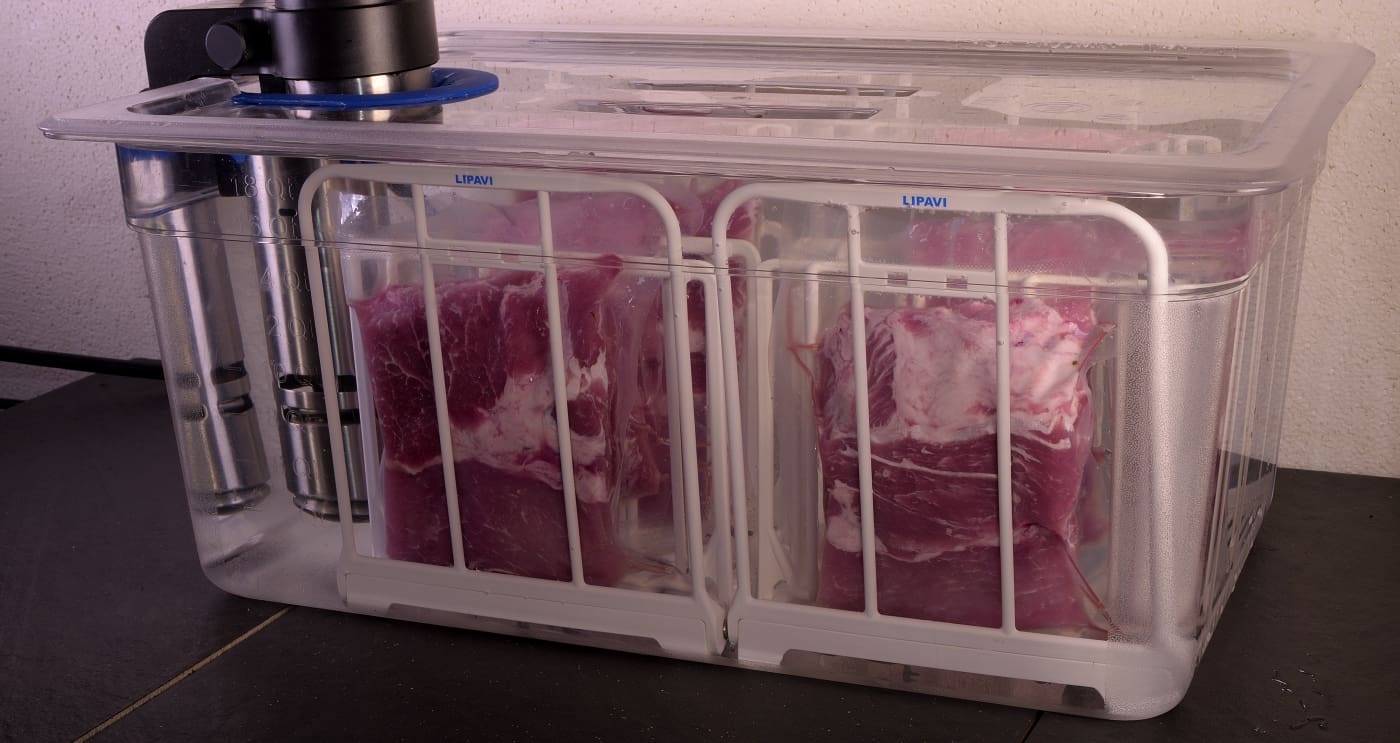
Above: Lipavi C10 container, N10 polycarbonate racks. Lipavi C10L-UNIR lid.
Procedure:
Stage the baby back ribs into dedicated vacuum bags. Seal and sous vide process @ 135 F/57 C for 16-24 hours. Click HERE to learn how to measure tenderness in real time.
Let sous vide timing work for you!
The rate of tenderization in the sous vide range of temperatures is very gradual. The difference in texture and appearance between baby back ribs processed for 16 hours and baby back ribs processed for 24 hours (at this temperature) is slight, if detectable at all. This means you have much more temporal freedom than when using conventional cooking methods.
When the ribs have become tenderized to your liking, remove the pouches from the bath and submerge in iced tap water until they achieve 70 F/21 C. This usually takes about a half an hour and is crucial to food safety, both for the ribs and for their neighbors in the refrigerator. Putting hot food of any kind in the refrigerator or freezer puts other foods at risk by raising the ambient temperature. After cooling, refrigerate packages over night or until they achieve 40 F/4 C.
Day of service
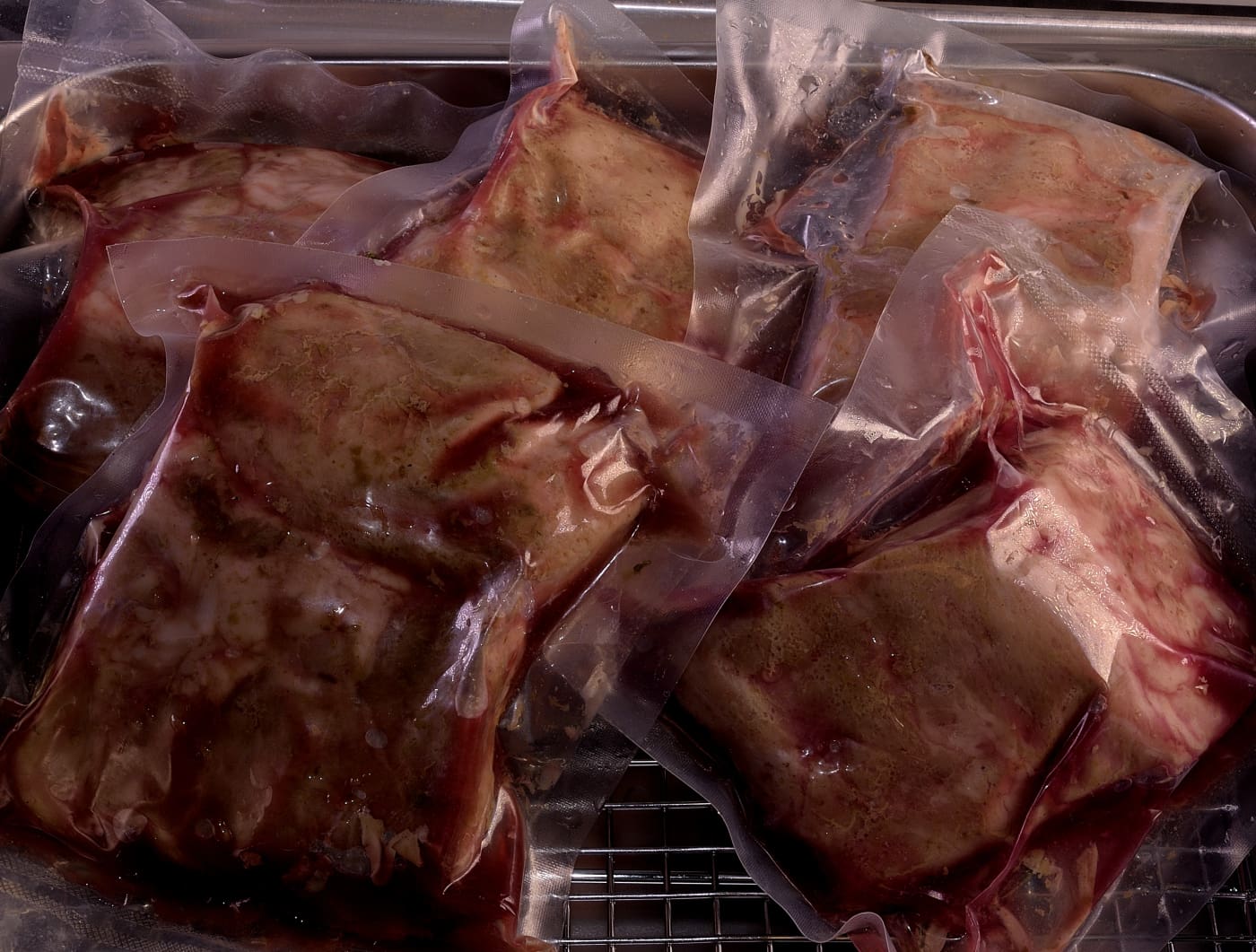
Dip the sealed pouches in hot tap water to melt the surrounding gel.
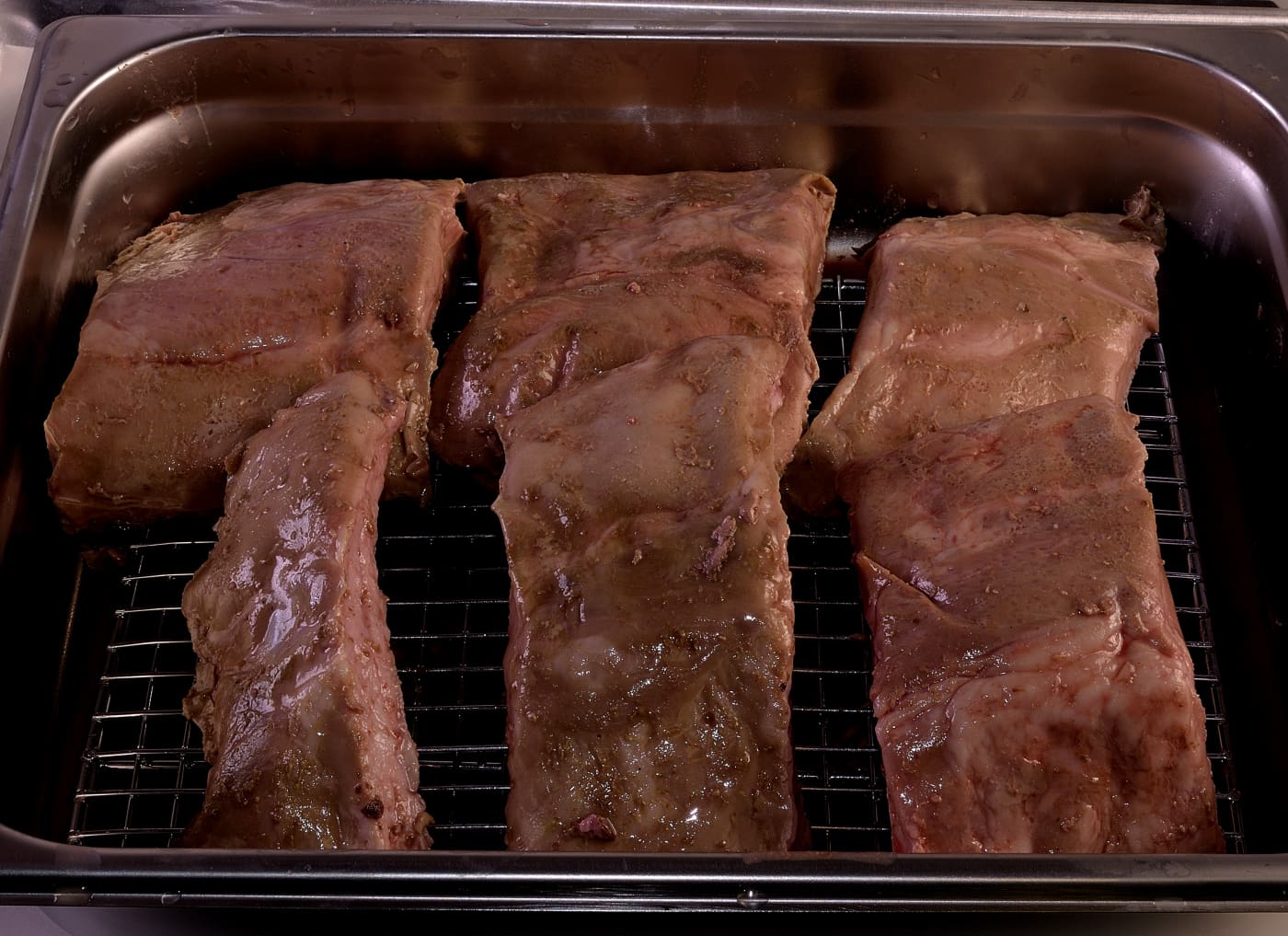
Remove the processed sections (or whole rack) from the bag, pat dry and lay the rack on parchment or butcher paper. Harvest the juices that were released into the bag during processing.
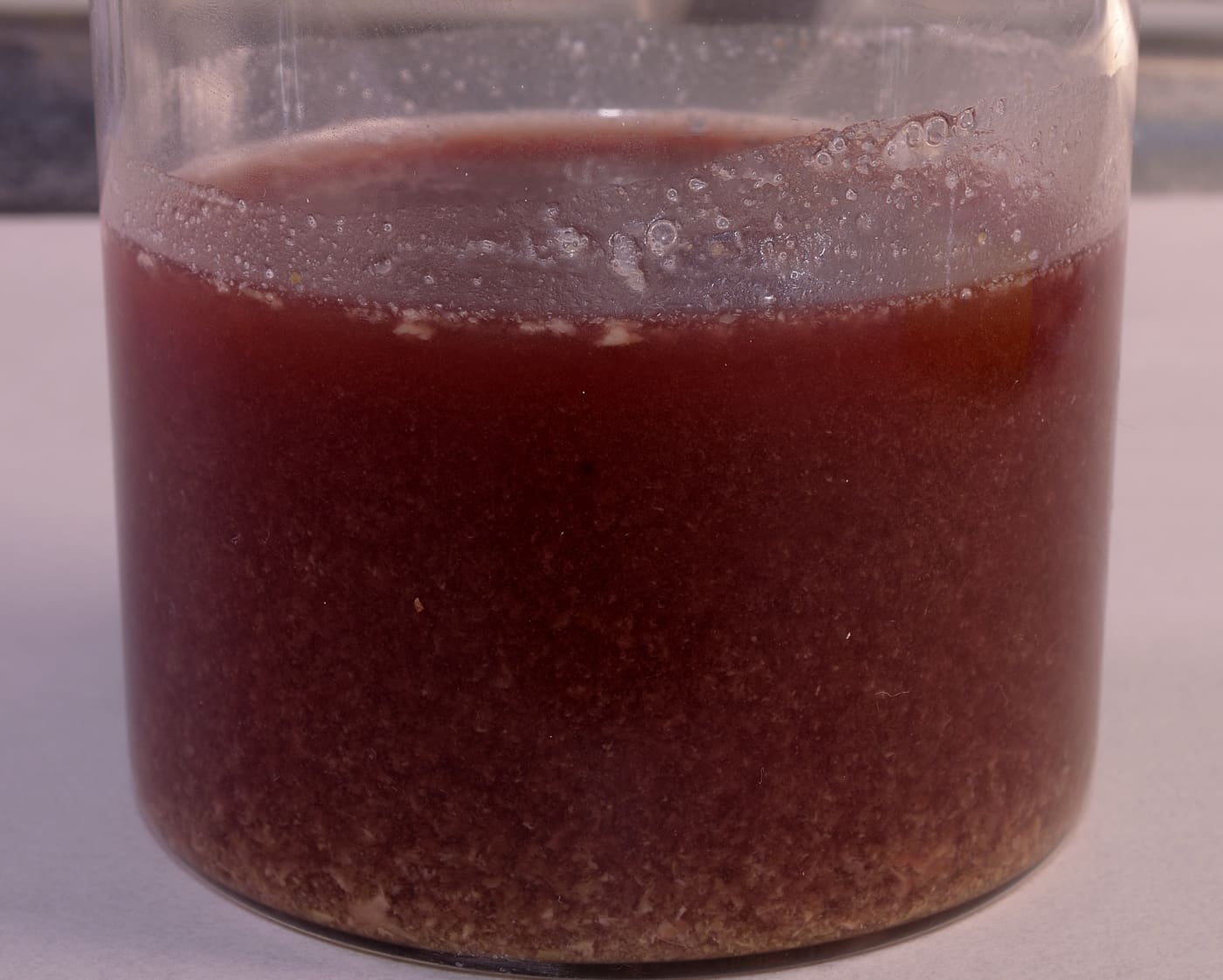
There is a lot of flavor in this substance, but it cannot be utilized in this form. Use the method explained HERE to separate the coagulating proteins from the consommé. Why? Using the clarification procedure will yield two different substances…
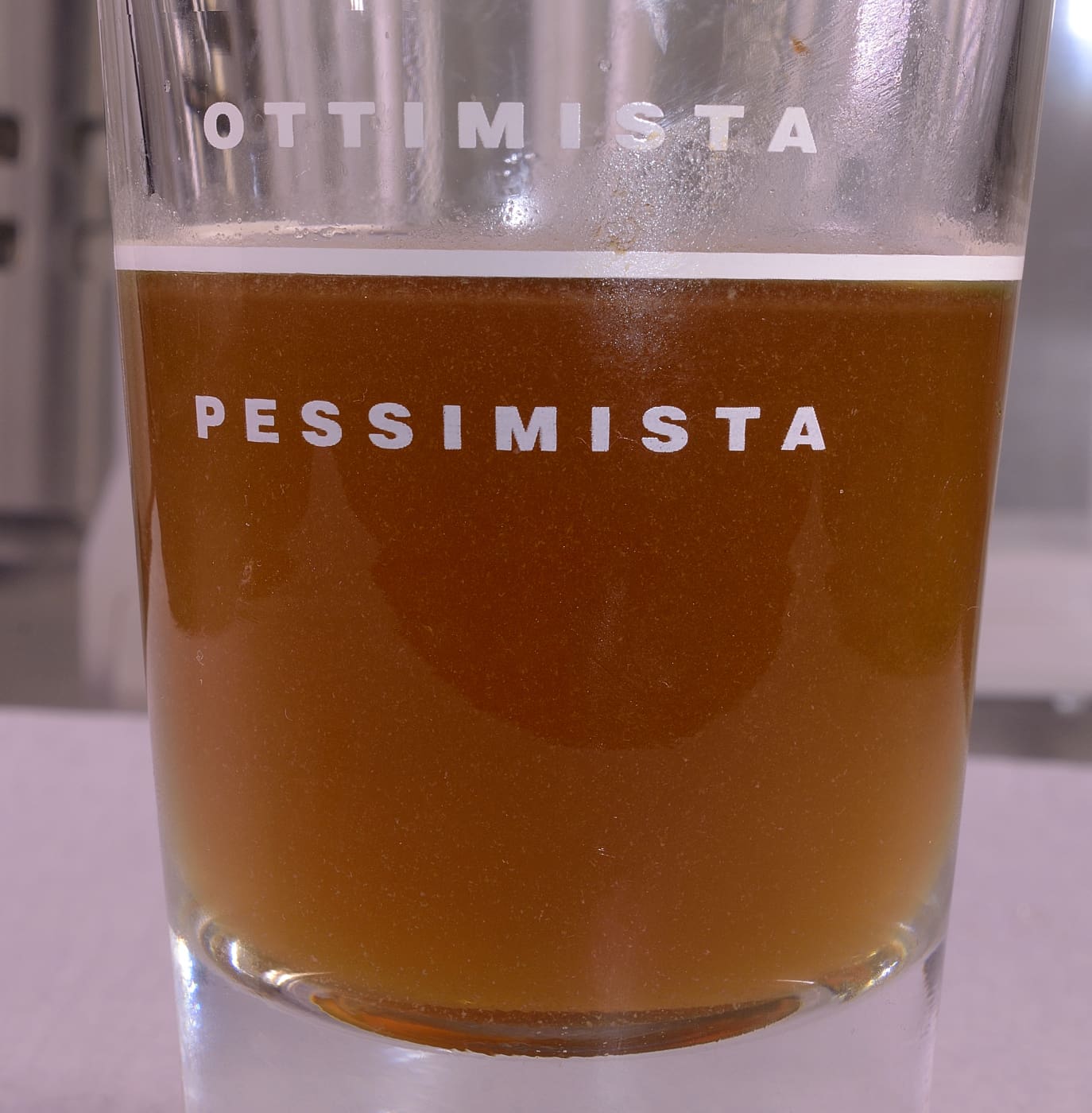
Above: the clarified juices. Once processed, they can be incorporated in any savory recipe that calls for stock or water. Refrigerate and utilize in a future application.
Below: these are the coagulating proteins that were removed by the clarification process–albumins and myoglobin. Some people feed them to their pets. I discard them.
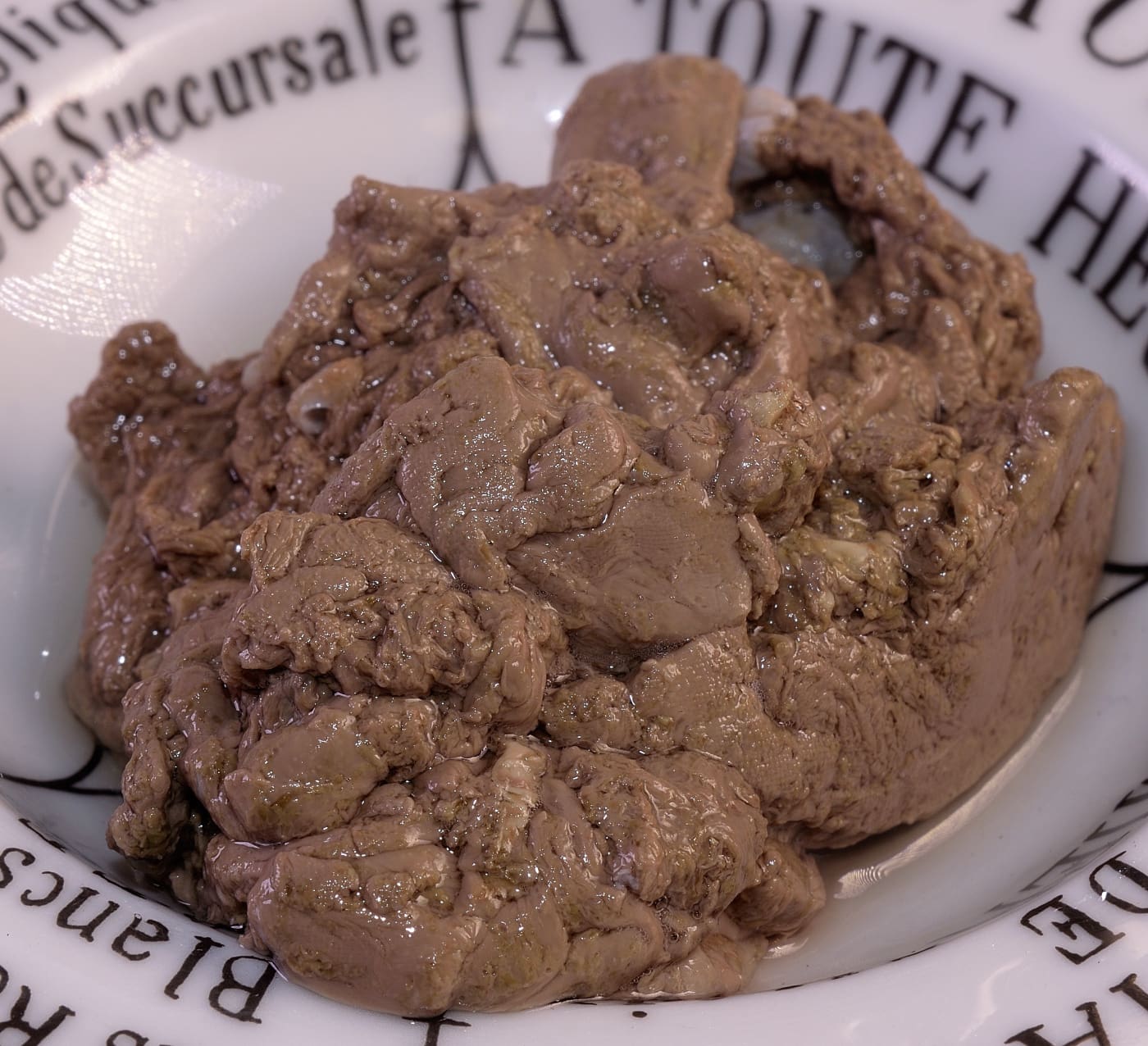
Optional: Before proceeding, make the Sweet Red Pepper Relish. Combine the red bell pepper, pear, orange, scallion, kosher salt, sugar and extra virgin olive oil as described in the ingredients section above.
Use a paring knife to peel the celeriac and slice very thin on a mandolin or deli slicer. Deep fry at 300 F/150 C until they stop sizzling. Drain on paper towels.
Preheat your oven to 275 F/176 C.
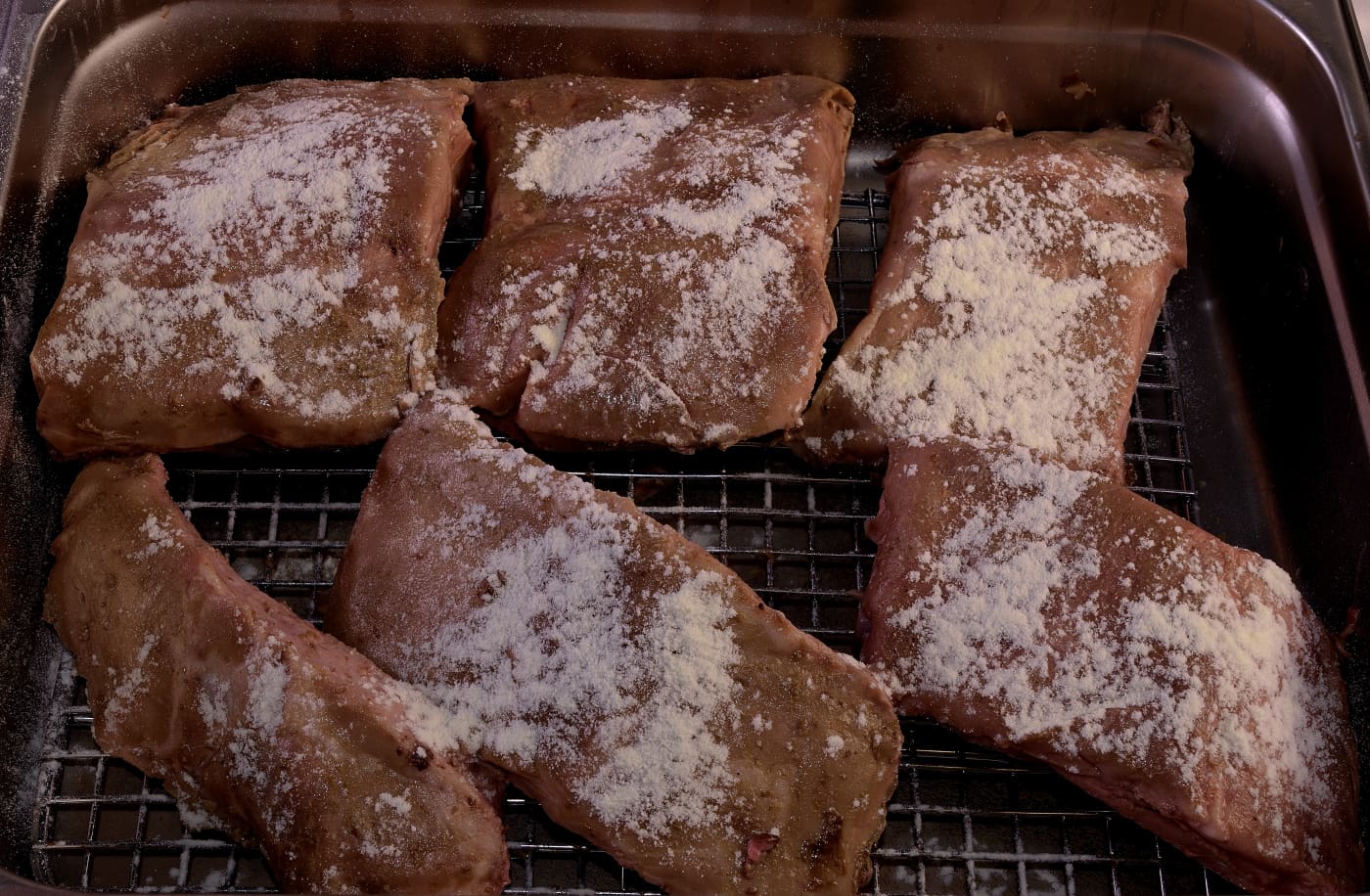
Dust the meaty side with powdered egg white. Fresh egg white can also be used–mix well with an equal amount of water and apply with a pastry brush.
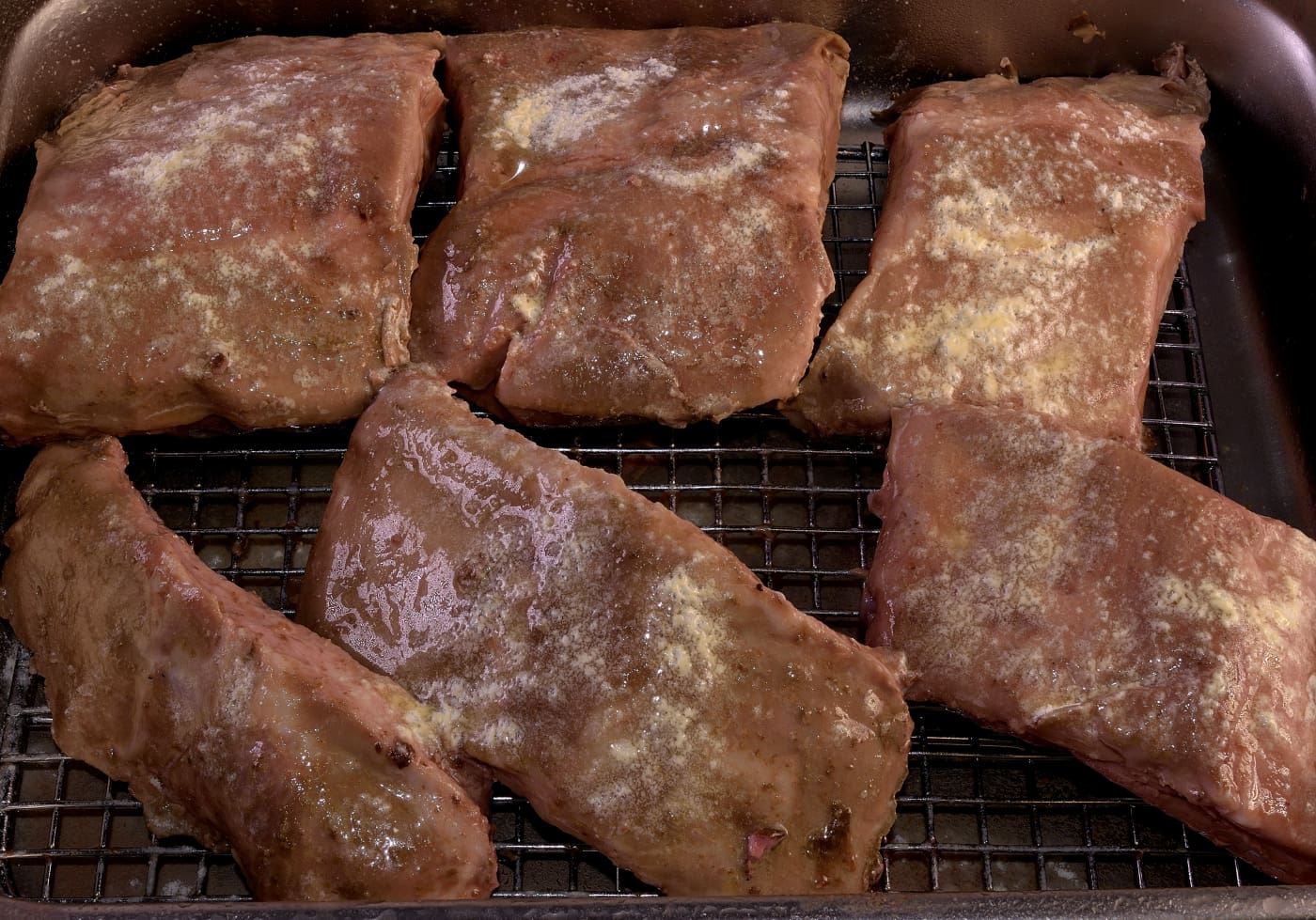
Spritz with water to dissolve the egg white–not necessary if you use fresh egg whites.
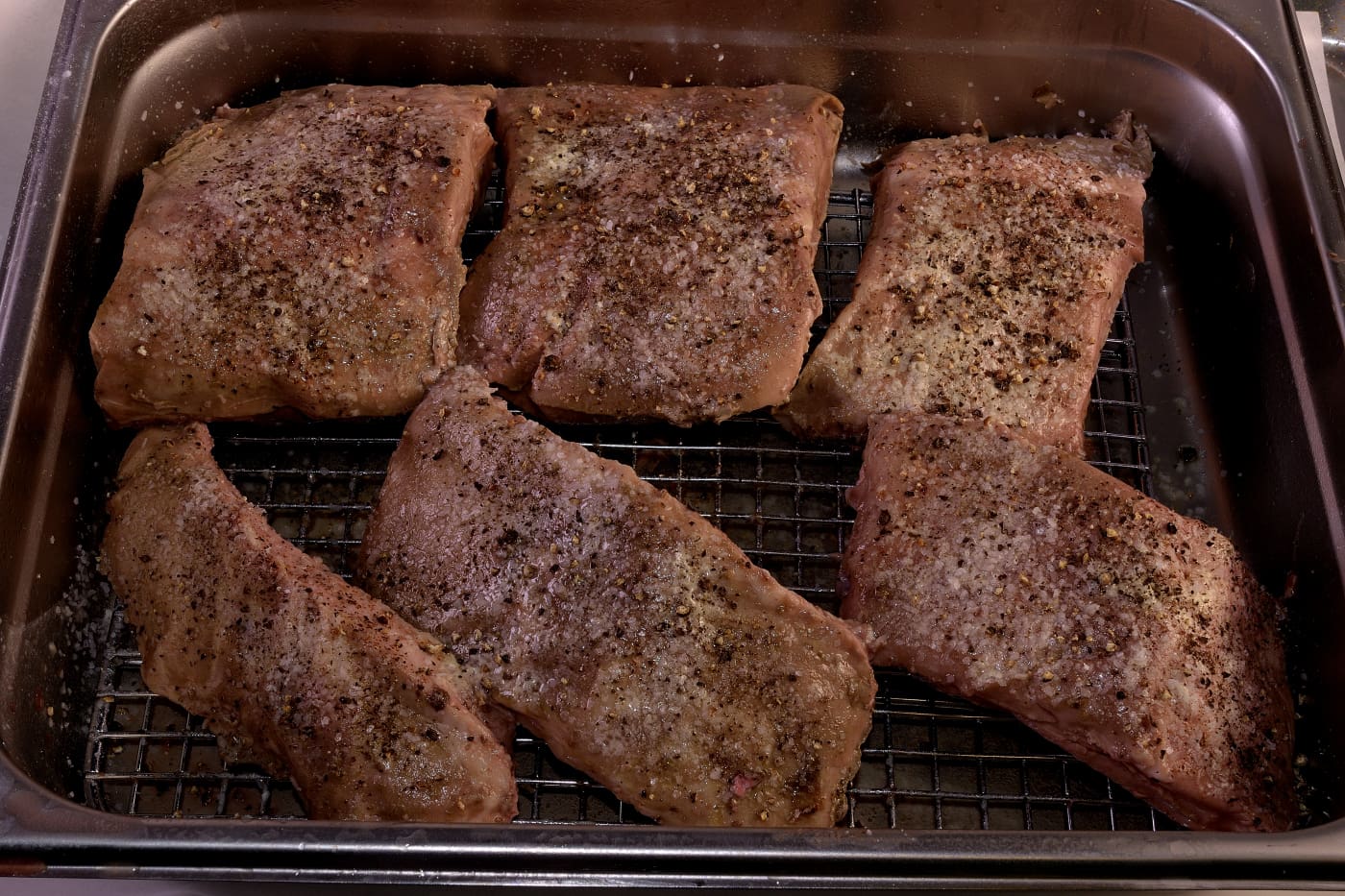
Sprinkle with kosher salt–approximately 2 teaspoons per lb./450 g of meat. Ground black pepper to taste.
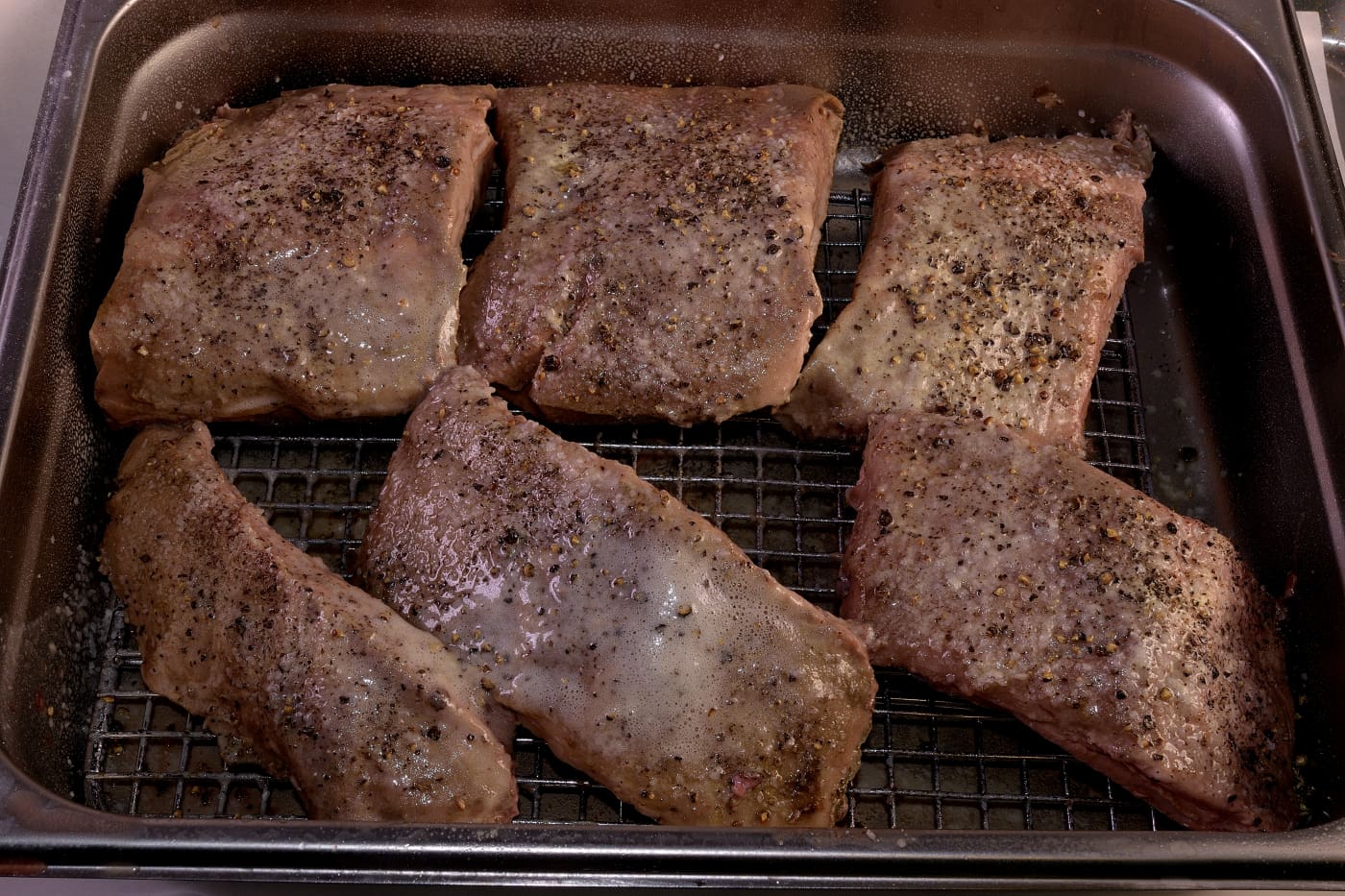
Spray (or drizzle) with vegetable oil to promote even distribution of heat.
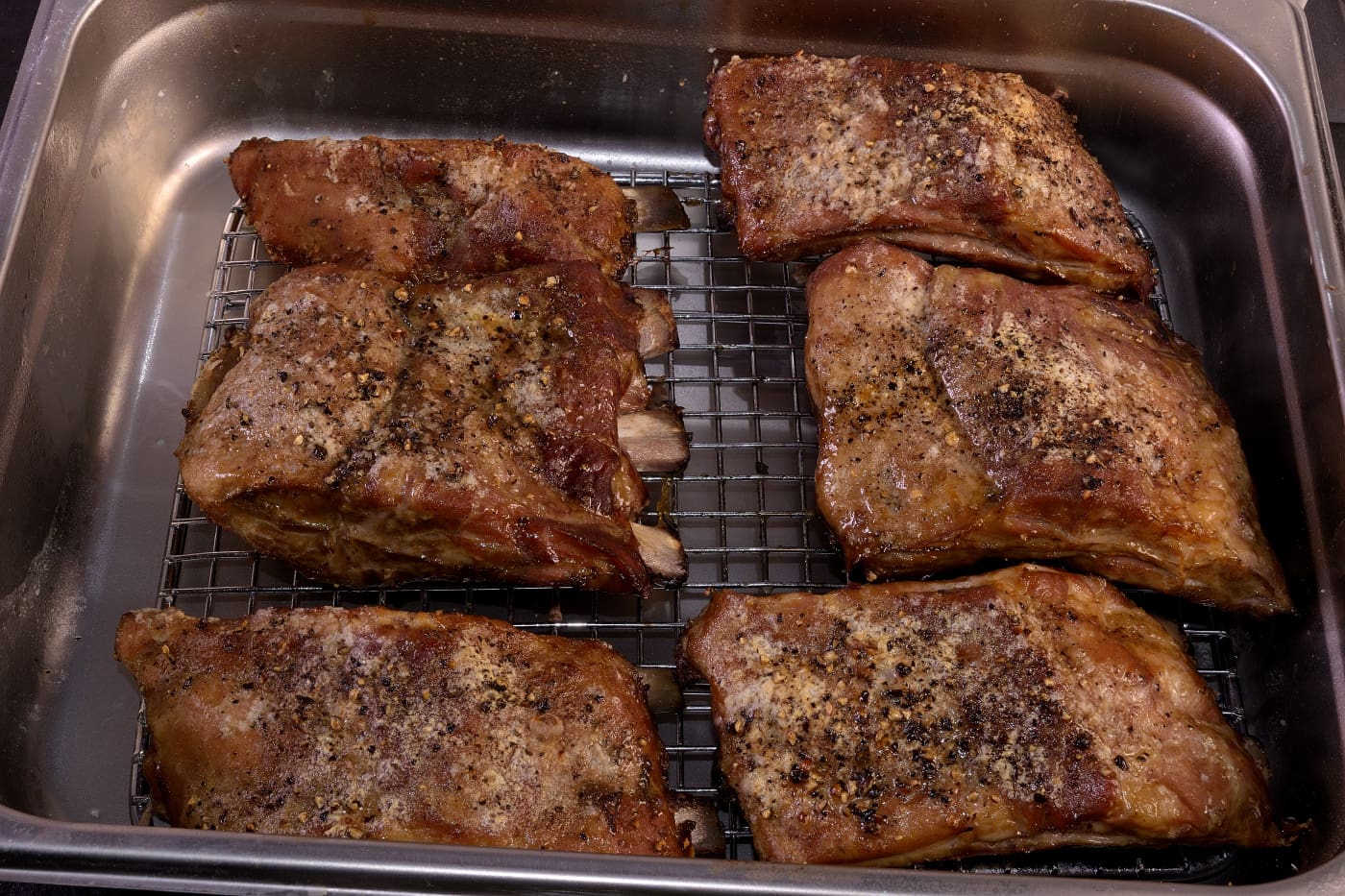
Roast for approximately 1 hour or until the desired appearance is achieved. Use a probe thermometer to make sure the ribs achieve an internal temperature of 140 F/60 C.
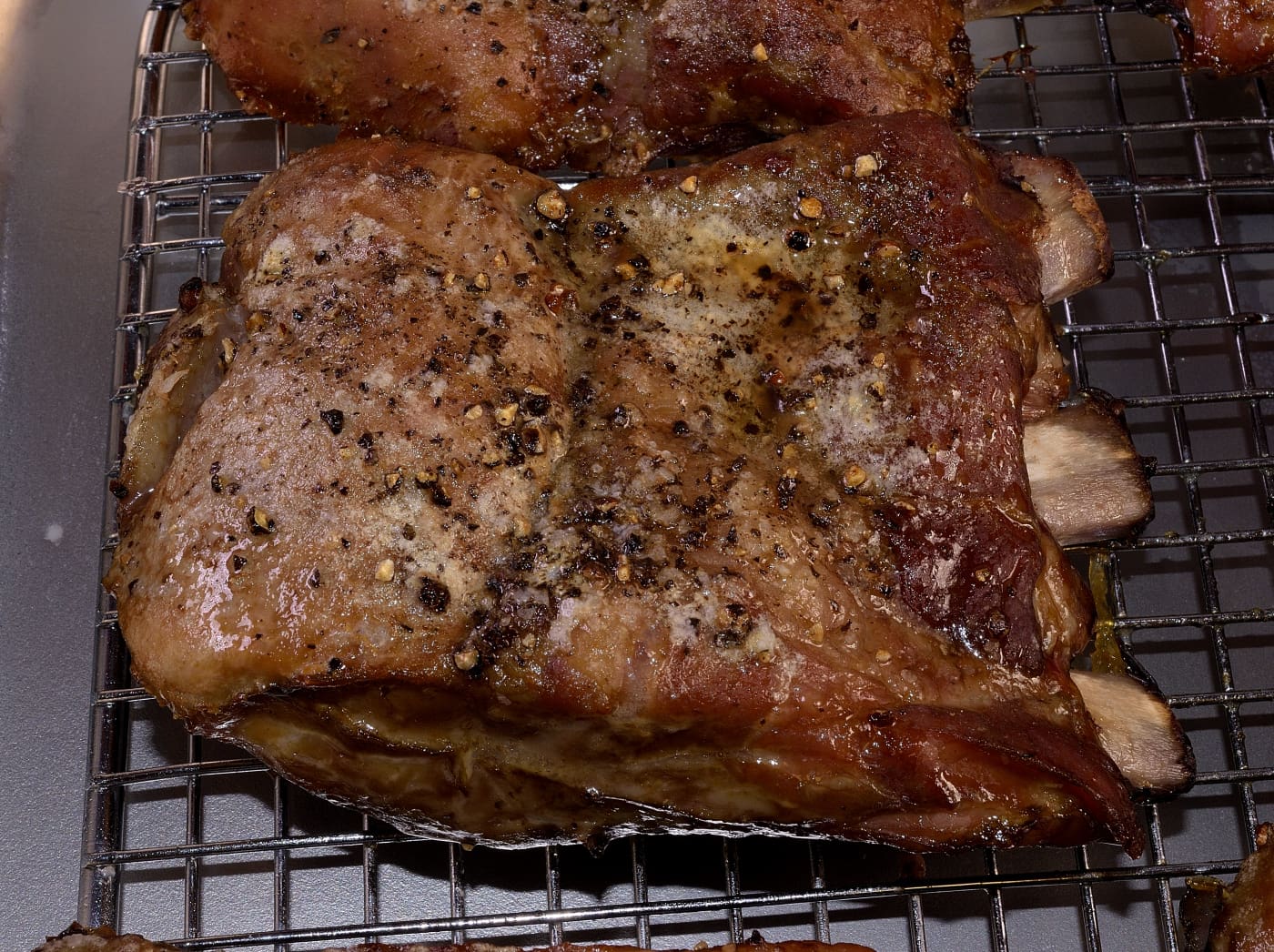
Hard to resist just the way it is. The cook is authorized to sample in advance.
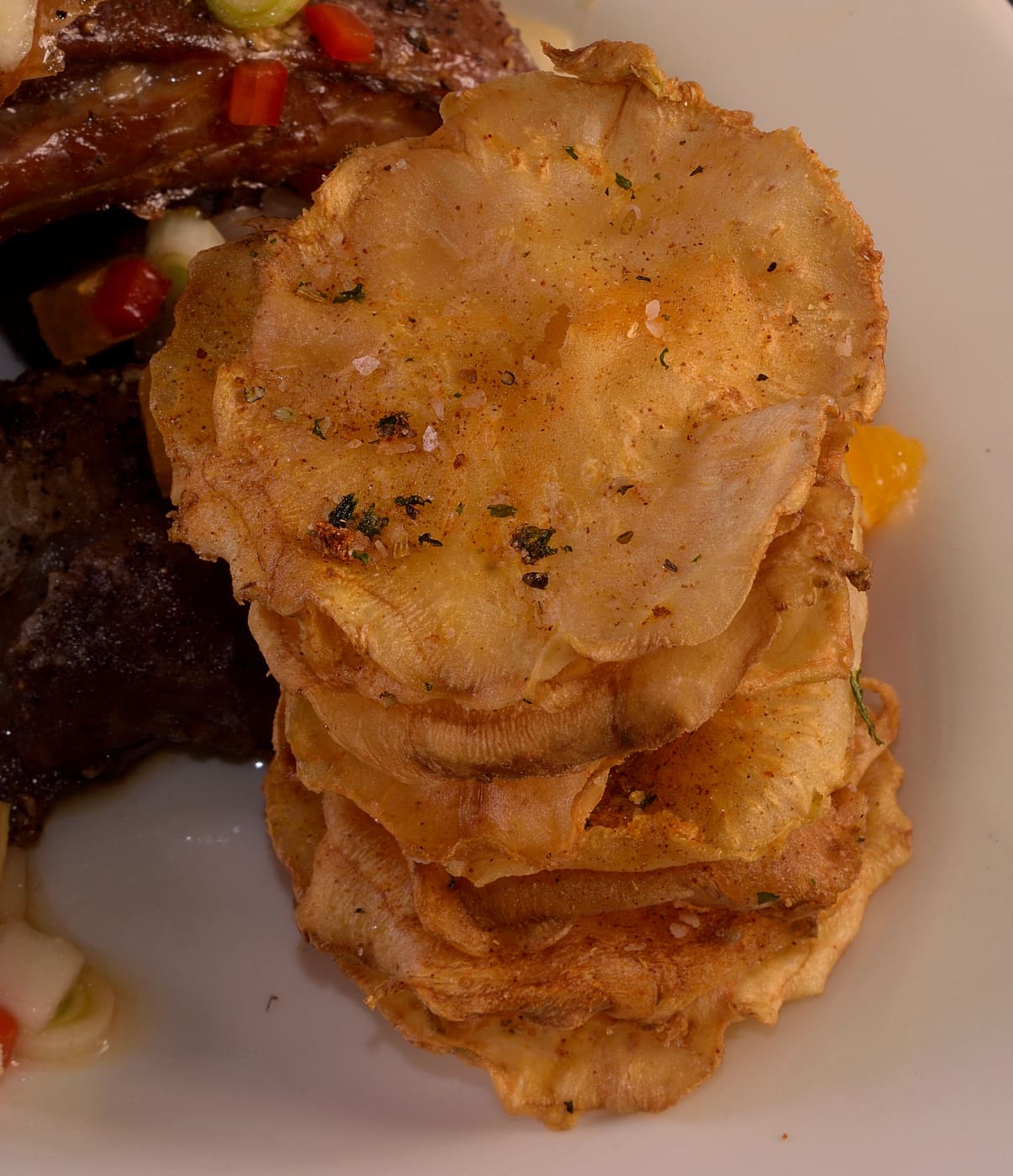
Stack the chips Jenga style.
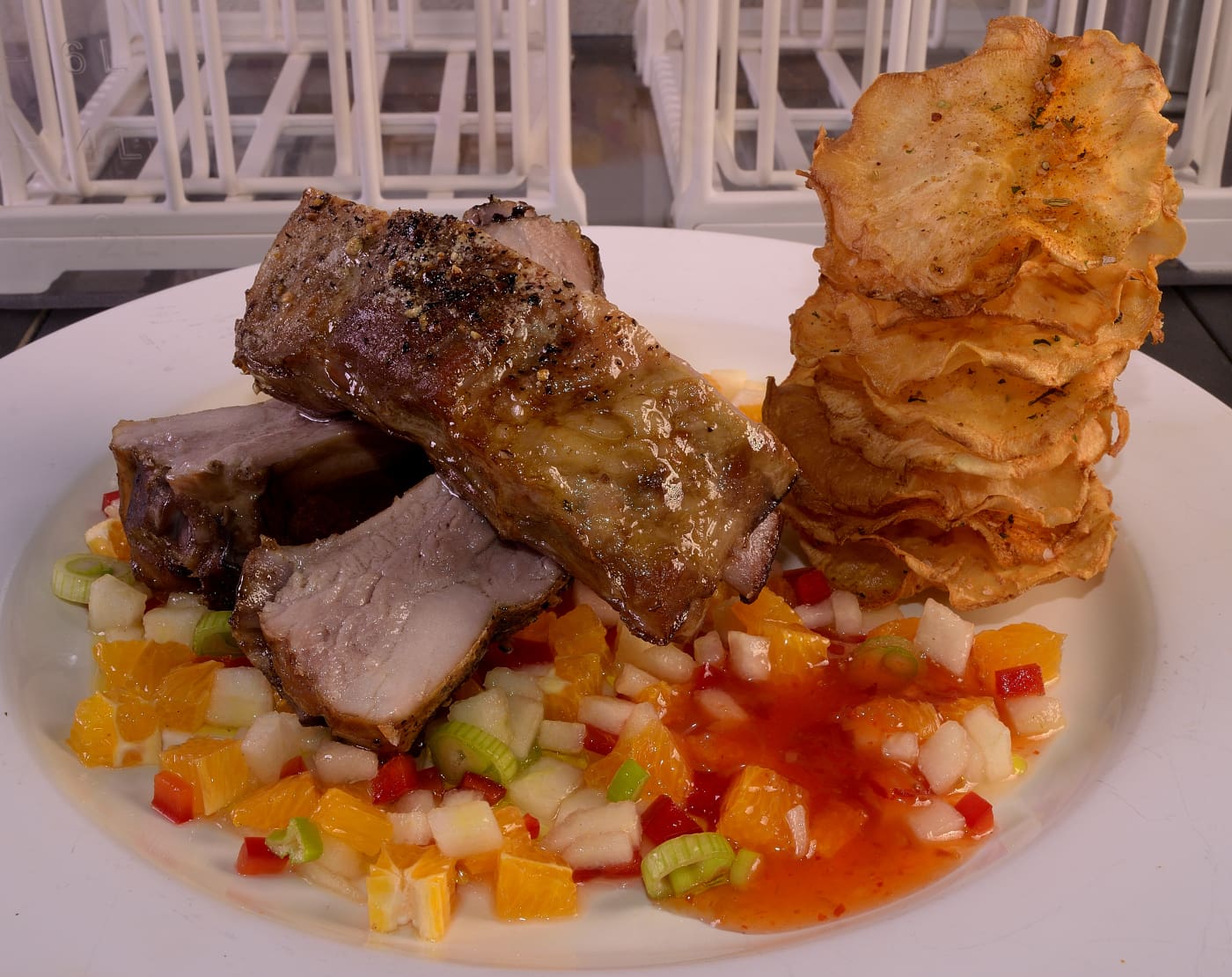
Splash some relish on the plate. Cut the ribs between the bones and arrange on top.
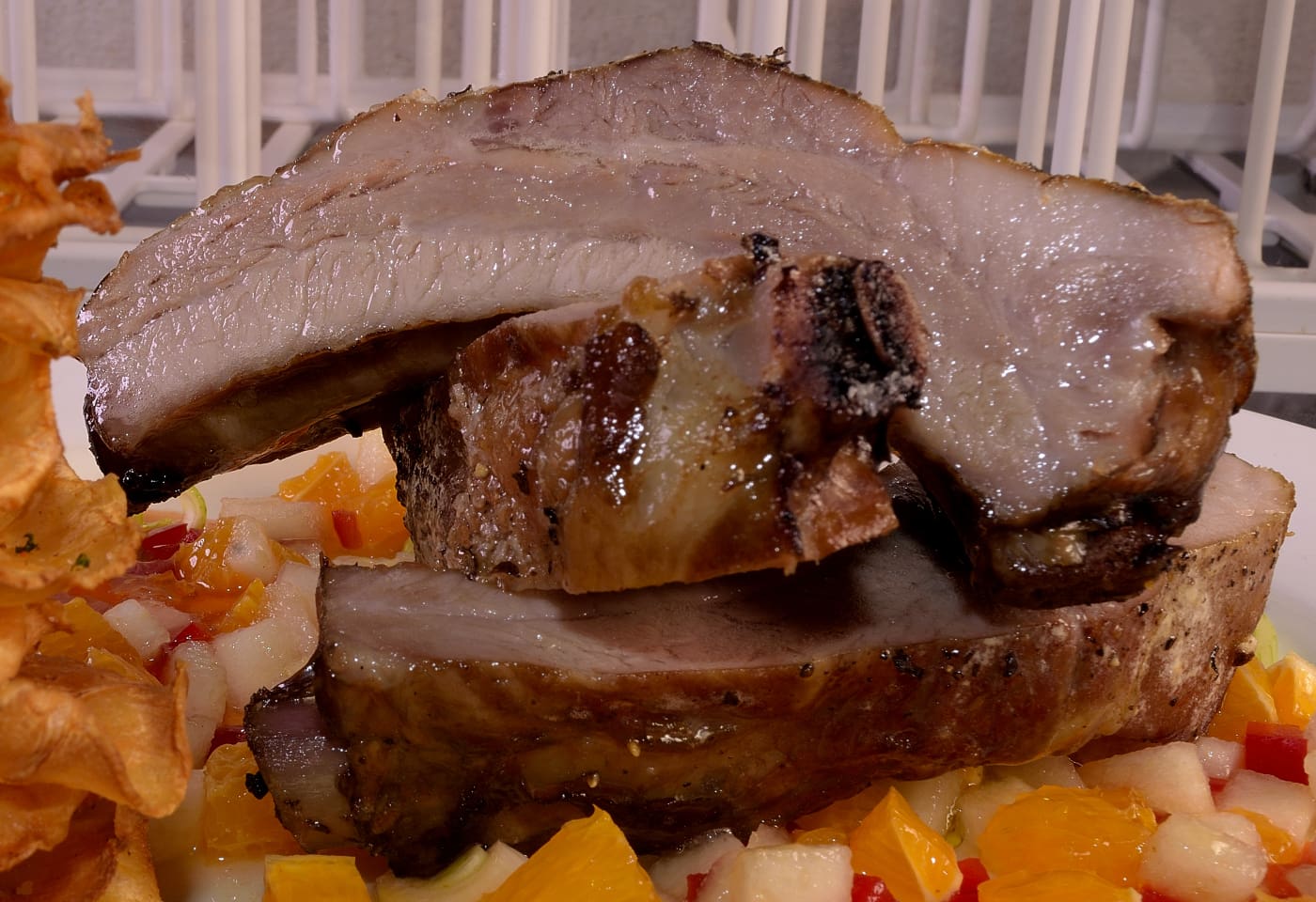
Up close.
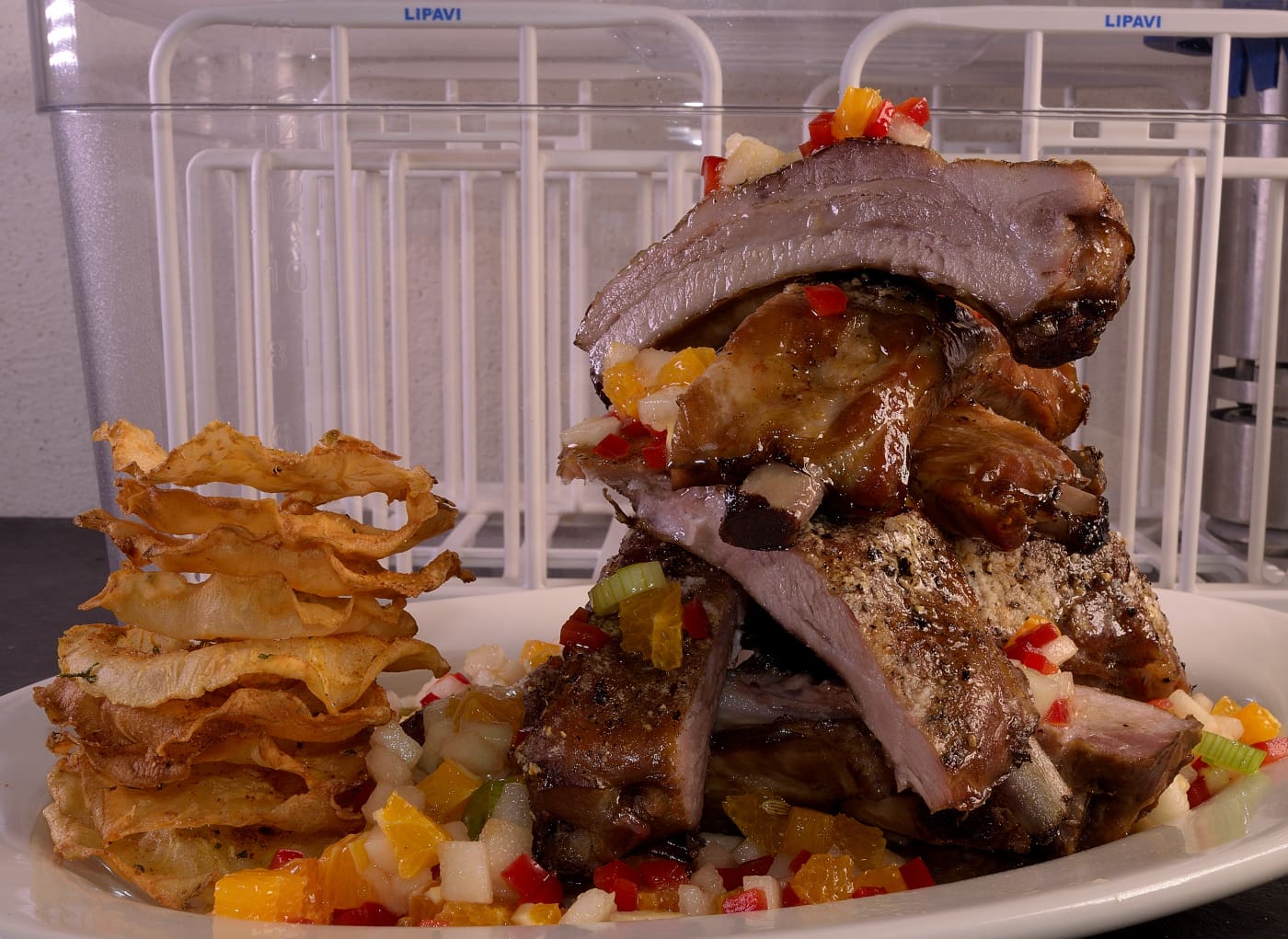
Alternatively, you can just stack everything up on a platter and serve family style.
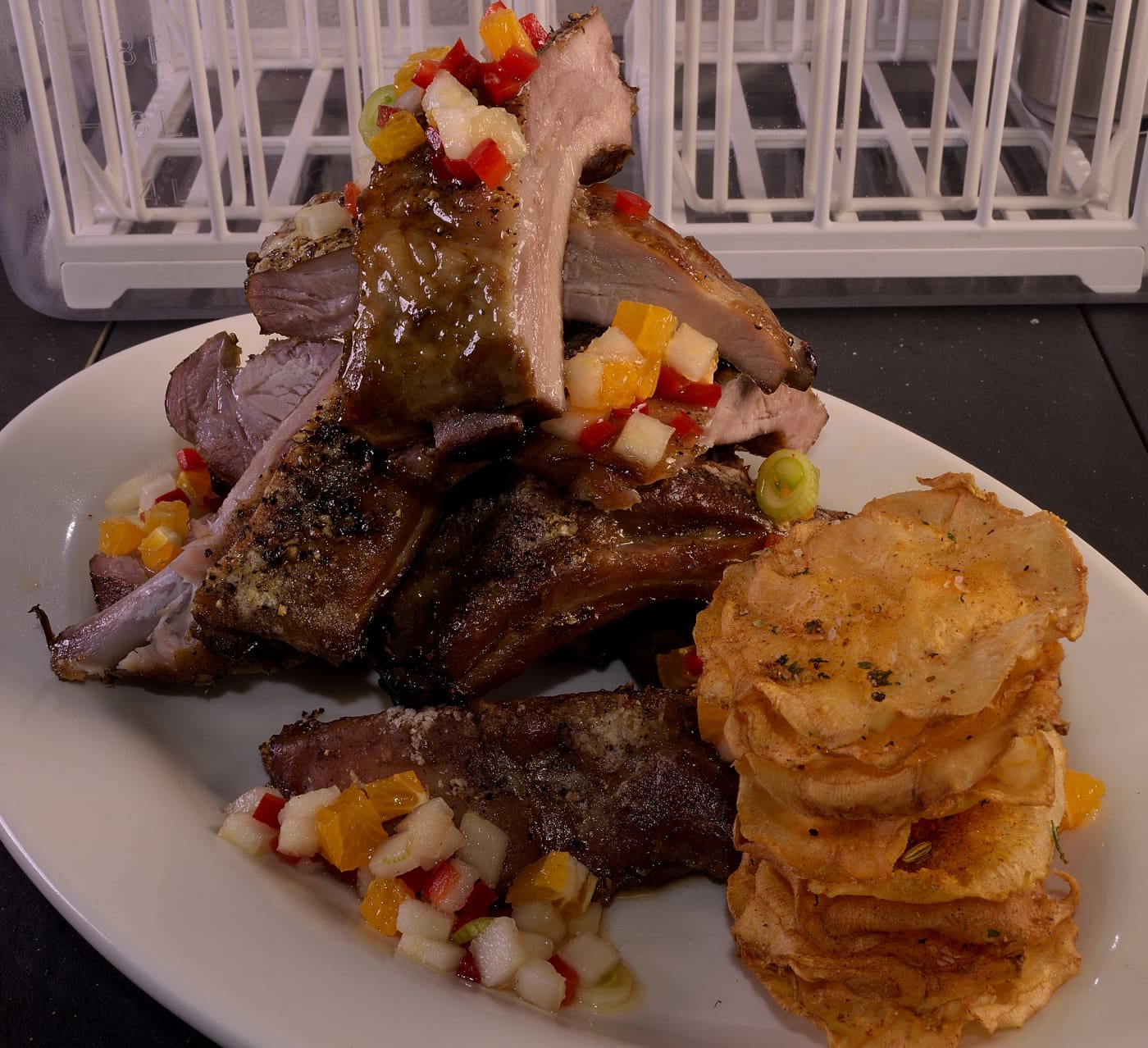
Viewed from above the rim.
Norm
Visit us in real time on Facebook at SVR–Sous Vide Resources; Low Temperature Pasteurization, Sous-B-Q™
